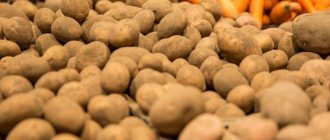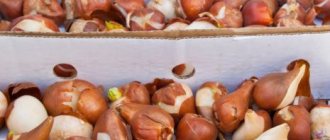Preparation for storage
Then how to keep zucchini fresh for a long time so that zucchini stays fresh for a long time? To do this, follow a few simple rules. Zucchini is related to pumpkin, so it is stored similarly, but there are some subtleties in preparation and storage.
- For storage, well-ripened, healthy fruits with dense, thick skin, free from diseases and pests, are selected.
- Unripe and young fruits are not suitable for long-term storage; they must be used immediately for cooking or canning.
- When transporting, try not to damage the peel, because bacteria get through it, which leads to premature spoilage of the vegetable.
- Harvest before frost sets in. Of course, frosts will not damage them, but bacteria will enter through the damaged skin and the fruit will be stored worse. As a last resort, if frost is suspected, cover the bush with some material overnight.
- The fruits are cut with a small stalk (about 5 cm). It is not worth cutting short, as it is a protective barrier to the penetration of bacteria. Fruit spoilage begins from the stalk. When you see fruits starting to rot, use them quickly. After cutting off the spoiled part, use the remaining part for food or simply throw it away, otherwise other fruits will start to spoil from them.
- Before storing, zucchini is cleaned of soil by wiping the vegetable with a dry cloth and allowed to air dry a little.
Determination of variety
Unfortunately, long-term storage of all varieties of zucchini is impossible. Only the following types are suitable for this.
- The so-called winter varieties, namely “Festival”, “Gribovsky” and “Golden Cup”. They are distinguished by their large size, thick crust and small number of seeds.
- In addition, the following are suitable for storage: “Aeronaut” - this species, which has a cylindrical shape and a dark green tint, reaches ripeness in just 46-48 days and is stored for up to 4 months;
- “Arlica” is very similar in appearance to the previous variety and has a particularly long shelf life;
- “Assete” - these large and practically seedless vegetables can be used for 3.5 months;
- “Yellow-fruited” is a slightly ribbed cylindrical variety that can last up to 3 months;
- “Negro” is a species that got its name due to its unusual black-green color and is stored for about 2 months;
- “Anchor” - this early-ripening variety of zucchini with light yellow flesh can be stored for up to 1 month without any loss of quality.
After you understand what variety the vegetables belong to, you should decide how to store the zucchini and what place to choose for them.
Zucchini is very popular not only because of its tasty and healthy pulp, but also because of the ability to store them both in the cellar and in an ordinary city apartment. This is especially convenient for those who do not have their own basement or cellar.
In order for zucchini to be stored for a long time, it must have a thick skin without damage.
How to store zucchini at home in an apartment
If there is no basement, vegetables are stored at home or in an apartment. The living space always has a constant temperature and low humidity. The main thing is that there should be no heating devices nearby. The fruits are stored well in a dark room, so they are simply stored in the pantry, under the bed, or on the sofa.
By properly preparing the fruits for storage, some varieties of zucchini can be stored until the new year, or even longer. The optimal shelf life for zucchini is 4-5 months. It should be noted that zucchini stored for a long time becomes less tasty and juicy. They become rough or, conversely, too soft. And their nutritional value also decreases over time.
Zucchini varieties suitable for long-term storage
An important condition for long-term preservation is the correct choice of variety. For good keeping quality, you need a thick peel and a small volume of small seeds. The following varieties meet these conditions:
- Aral . Hybrid variety, ultra-early ripening in 35-40 days. The fruits weigh up to 0.8 kg. Very high yield - up to 22 kg per 1 sq. m. The fruits are cylindrical, pale green in color, with slightly pronounced ribs. The length of the fruit is 15-20 cm, the flesh is dense and tender, the seeds are large.
- Arlica . Dutch variety, average ripening time is 50-65 days. The fruits grow up to 15-17 cm, weight 0.8 kg, light green peel with a dark mesh. The pulp is juicy, but loose. Brings up to 6 kg per 1 sq. m.
- Aeronaut . This is a zucchini squash that ripens early and takes 45 days. The fruits grow approximately 15-20 cm long, weighing up to 1.5 kg. A variety with high yield - up to 7 kg per 1 sq. m. Fruits can be stored for 4 months.
- Gribovsky 37 . An unpretentious hybrid, average ripening time is 45-55 days. The peel is light, the fruits grow 17 cm, the average weight is 1 kg. The variety brings up to 9 kg per 1 sq. m.
- Pear-shaped . The name of the variety is associated with its shape - the fruits thicken towards the base. The peel is pale yellow, the weight of the fruit is up to 1.4 kg. Ripening in 50 days, yield – up to 9 kg per 1 sq. m. Juicy and aromatic orange pulp. The peel is very dense, the fruits are stored for a long time.
- Yellowfruited . Domestic variety, early ripening – 45 days. The fruits are sunny yellow with a saffron network and resemble bananas; they grow up to 20 cm, with an average weight of 1 kg. The variety brings up to 18 kg per 1 sq. m.
- Golden Cup . Hybrid bush variety, early ripening. One bush simultaneously bears 5-6 fruits, 16-20 cm long and weighing 1 kg. The harvest is perfectly stored until February.
- Marquise . Hybrid variety, early ripening – 40-45 days. The fruits are dark green with white flesh, grow up to 45 cm, average weight is 3.5 kg. 1 sq. m can bring up to 11 kg. The variety is resistant to temperature changes and is excellent for transportation.
- Little Negro . Hybrid variety, early ripening - after 40 days. The fruits are dark green in color and may have small whitish spots. The pulp is greenish-white, the average weight of the fruit is 1 kg. The harvest is large, up to 18 kg per 1 sq. m.
- Tristan . Hybrid zucchini-zucchini, ultra-early ripening - 35 days. Fruits with a smooth dark green skin and delicate white contents, length 25-30 cm, average weight - 1 kg. 1 sq. m of planting yields up to 15 kg of zucchini.
- Festival . An unusual variety, the fruits are round in shape and resemble a pumpkin. The color alternates stripes of different colors: greenish, bright yellow, whitish, almost black. The fruits weigh 0.5 kg, the average yield is up to 6 kg per 1 sq. m. Excellent keeping quality - the crop is well preserved for up to 10 months.
- Anchor . Hybrid variety, ripens in 40 days. The fruits are pale yellow, the pulp is the same, the average weight is 1 kg. The harvest is good, up to 12 kg per 1 sq. m.
You should pay attention not only to the yield of zucchini, the size of the fruit and their keeping quality, but also take into account the peculiarities of cultivation. This applies to recommended regions and conditions of care.
Freezing zucchini in the freezer
In this case, to enjoy fresh zucchini in the spring, you can freeze them. Of course, you can preserve or dry it. Numerous studies have confirmed that frozen vegetables, berries, and mushrooms retain all their nutritional properties for a long time.
Young fruits are suitable for freezing. Before putting them in the freezer, they are washed, wiped dry, and then cut into pieces. Whether to peel the peel is up to everyone to decide for themselves. Place the chopped zucchini in a clean, dry plastic bag, remove the air, tie it tightly and store it in the freezer.
General rules
How to keep zucchini fresh for the winter? When growing a crop and its subsequent storage, everything plays an important role, starting from the choice of the variety of vegetables that are intended for storage. Zucchini of mid-late and late varieties are most effectively preserved.
Varieties show the best performance:
- Festival;
- Golden Cup;
- Gribovsky;
- Arlica;
- Asset;
- Aeronaut;
- Yellow-fruited.
Zucchini are well adapted to long-term storage - with proper storage, some varieties can be preserved until a new harvest.
Zucchini varieties that are best suited for storage:
- Golden;
- Little Gypsy;
- Black handsome;
- Bumblebee;
- Zebra;
- Multi-storey;
- Skvorushka.
Zucchini should not be kept in storage longer than February - they lose their consumer qualities, which excludes the advisability of their further storage.
It is better to process the vegetables by peeling them and removing the seeds, which during this storage period can add bitterness to the zucchini. After this, you can freeze the zucchini at home by placing them in portioned bags.
How to store zucchini in the refrigerator in winter
If you cut off part of the zucchini, for example, to feed a small child, then you could not use the whole zucchini at once. Then store the remaining cut part in a household refrigerator, but no more than a week. The cut zucchini is peeled, cut into slices or pieces, placed in a container and stored on the bottom shelf of the refrigerator.
In conclusion, watch the video on how to store zucchini in the winter at home in an apartment.
Dear readers, perhaps you know another way to store zucchini, write about it in the comments, I will be very grateful to you.
Have a good harvest!
Storage methods and periods
We offer several ways to store zucchini.
In a refrigerator
You can store vegetables longer in a cold place using plastic or paper bags. Before placing them on the vegetable shelf of the refrigerator, you should make holes in the cellophane so that the zucchini “breathes” and does not rot. store zucchini in the refrigerator for about 3 months.
In such a net you can store zucchini not only in the refrigerator, but also hanging in the basement
In the cellar
In a country house, the fruits can be placed in the cellar . At a temperature of +4...6 ℃ vegetables can be stored for up to 6 months, until spring. It is important to ensure that the air humidity in the basement does not exceed 85%. Also, do not forget to regularly inspect vegetables for spoilage, since even in a favorable environment, rotting processes can begin.
There may be several storage options:
- in a cardboard box . Place the zucchini in a box in one layer and separate from each other with cardboard dividers. There is no need to close the box - air must flow to the fruit;
- in a suspended form . Each specimen must be placed separately in a net (a simple gauze bag or old nylon stockings will also work). Hang the finished nets with vegetables as close to the ceiling as possible so that they do not touch each other. To maintain an optimal balance of temperature and humidity, try to ventilate the basement frequently;
- on a shelf covered with hay or straw . Place the vegetables on the prepared “pillow”, leaving free space between them.
When storing zucchini in a box with straw, make sure it is dry.
At room temperature
For short-term storage, you can use young fruits with thin and soft skin . Where is the best place to place them? Place the vegetables in a box and place them in a dark place, such as a pantry or under the bed. In such conditions, zucchini can stay at home for 2-3 weeks.
Fruits with a dense peel can be kept at room temperature (no more than +18…22 ℃) without additional containers. To do this, unwashed but cleaned zucchini should be laid out in a dry, dark place, for example, under the table in the kitchen or on shelves in the pantry. So vegetables can last 2-4 months.
We offer an effective way to store zucchini in an apartment (house, room, insulated balcony) until spring (6-7 months):
- choose ripe, whole zucchini with already hardened skin and “tails” at least 10 cm long;
- clean the fruits from the ground with a dry cloth (do not wash);
- Place the zucchini vertically (tails up) in a box whose bottom is covered with paper. (Any box is suitable: wooden or plastic, as long as the walls are not solid. The fruits can touch; it is not necessary to place cardboard or paper spacers between them);
- Place the box in any not very hot place in the room.
In the freezer
One of the methods popular among housewives to preserve zucchini for the winter is freezing . Before putting the product in the freezer, be sure to rinse the vegetables and peel them from the stems, and then proceed from your own preferences. For example, if you often prepare vegetable stews or vegetable soups, you need to cut the zucchini into cubes. Do you prefer fried zucchini or zucchini-based snacks? Then cut the fruits for freezing into slices no more than 10 mm thick.
How you cut zucchini for freezing depends on your preference.
Place the chopped vegetables on a tray or cutting board, spreading them evenly over the surface. Place the workpiece in the freezer for several hours, then remove the trays and place the contents in bags or food containers to put back into the freezer. How long can frozen zucchini be stored? Vegetables prepared in this way can be saved until the next harvest.
Frozen zucchini is convenient to use for preparing various dishes.
In the photo above you see small slices of frozen young zucchini with a thin, soft skin (a vegetable of this type can be easily cut without removing the skin, but this will not work with ripe zucchini - you will have to remove both the skin and the seed chamber). Freezing young zucchini has only one advantage: you don’t need to peel them.
Meanwhile, it is better to store ripe zucchini frozen . Their pulp is denser, it does not spread when cooked and tastes much better (young defrosted zucchini in winter dishes is watery and mushy).
Whatever storage method you choose, remember that the longer the zucchini lies, in the freezer or cellar, just in the room or in the vegetable compartment in the refrigerator, the less beneficial substances for the body will remain in them.
An important stage is harvesting and selection
Harvesting must be done before the onset of cold weather. It is important that the temperature is kept above zero. Frozen vegetables have a short shelf life. Fruits that are even slightly deformed: with cracks, dents, blackening - quickly deteriorate.
Harvesting rules:
- The maturity of a zucchini is determined by its appearance : color and size, depending on the selected variety.
- You can tactilely determine the maturity of the crop . The vegetable is dense, its skin is thick, and when tapped, a dull sound is heard.
- Mature zucchini should have a ripe stalk . Just don’t allow the fruit to become overripe, otherwise the keeping quality and taste characteristics will be reduced.
- You need to cut the fruits carefully with a garden knife so as not to damage the fruit. Leave the leg at least five centimeters. After some time, it will dry out and protect the fetus from infection. The size of the vegetable should be between 20-40 cm.
- Harvesting must be completed before the first frost . It is recommended to leave the collected fruits in the fresh air under the sun to dry. Place on film or in boxes in one layer and leave in the open air for 3-4 hours.
Important! Do not wet the crop with water. The medium-sized fruits reach a length of 20 cm. They are used for stewing, pickling, salads; they have small seeds and soft pulp. It is recommended to leave large specimens for stuffing and stew.
Immediately after drying, processing technology is carried out. It consists of the following steps:
- Clean the vegetable from dirt and sand. It is important not to damage the integrity of the zucchini peel.
- Vegetables should be sorted by examining each one individually. If there is damage to the root crop, then they should be used first.
- Choose medium-sized fruits for long-term storage, and use large fruits in the first months.
Interesting! Storing zucchini can be designated as a separate item. Many summer residents consider this type of zucchini to be long-lived. For harvesting, choose fruits with hard skin.
What to do if zucchini starts to spoil
In order not to lose the harvest prepared for the winter, and also not to provoke the appearance of fruit flies, it is necessary to regularly inspect vegetable stocks.
If rot, mold or smudges are detected, such items should be disposed of immediately. Otherwise, there is a possibility that all the other zucchini will spoil.
This is due to the fact that 90% of the melon crop consists of liquid, and in such an environment mold and spores develop at an incredible speed. Such vegetables should absolutely not be eaten even after heat treatment.
Crumpled or slightly dried out zucchini should be removed from storage.
Vegetables can be cooked, but the fruits must first be thoroughly processed, cutting out spoiled pieces.
Optimal storage conditions
Many factors influence how long zucchini can be stored. Only belonging to a certain variety and proper cleaning cannot 100% guarantee the shelf life of the product. To ensure that fruits do not spoil and remain fresh for as long as possible, they need to be created with ideal conditions for preservation. And to do this, you need to know at what temperature and where the vegetables will lie best.
For long-term storage of zucchini, the following are optimal:
- temperature and humidity in the room – +3…+5 °C and 80-85%;
- good ventilation and complete absence of light.
Based on these indicators, a well-equipped cellar or basement would be the ideal place to store the vegetable harvest. You can place zucchini in a permanent shed or garage, but provided that they are heated in winter.
In apartment conditions, long-term storage of zucchini can be successfully carried out only in one place - on an insulated balcony. It is there that the temperature and humidity indicators will be closest to what is needed.
Deep freezing is considered a modern and practical way to store zucchini for a long time. If you have a refrigerator with a spacious freezer, it is easiest to provide yourself with this product out of season.
Features of storing zucchini
Zucchini (sometimes translated from Italian, “zucchini”), like zucchini, is a type of pumpkin, only it is of American origin. It differs from its “big brother” in appearance, method of growth and storage. An ordinary zucchini is unpretentious and has many branches. Zucchini:
- grows “more carefully”;
- smaller in size;
- distinguished by its dark green color and tender flesh;
- loves warmth and moisture;
- ripens faster than zucchini;
- suitable for eating raw;
- contains fewer calories;
- does not tolerate freezing.
Long-term storage of zucchini depends on the variety. Varieties with thick skins are best. There are several varieties that are stored well and for a long time in the cold season: 'Nero de Milano', 'Zolotinka', 'Bumblebee', 'Zebra', 'Black Beauty', 'Skvorushka', 'Multistoried'.











